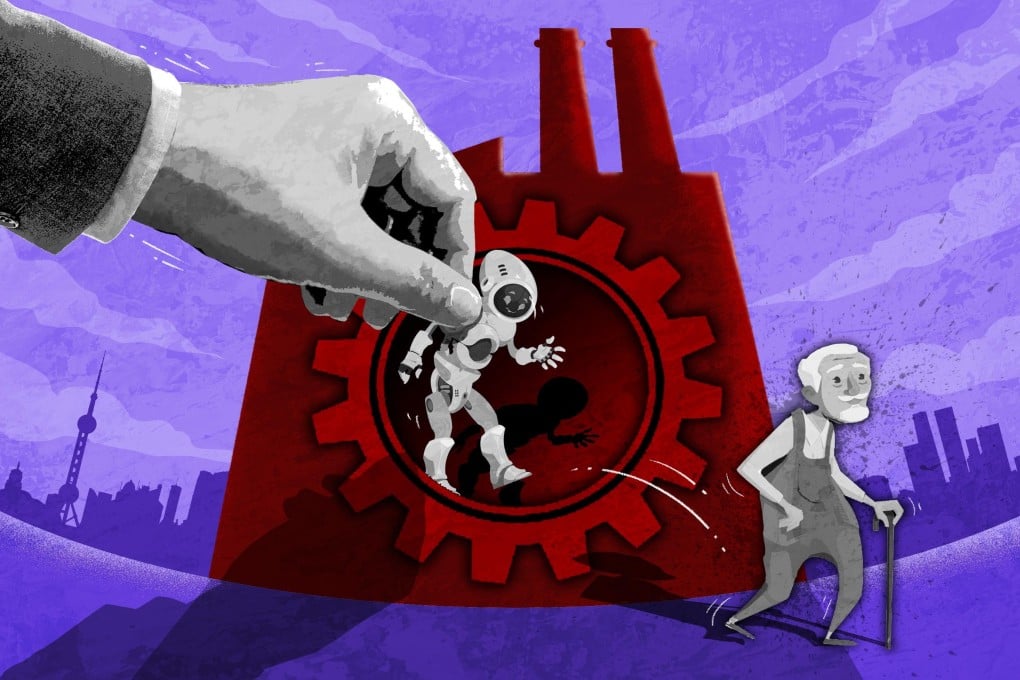China steels itself for labour shortfalls, demographic decline with industrial robots
- As China looks for ways to cope with its shrinking labour force and ageing population, robotic manufacturing looms large as potential answer to both problems
- Gains in labour productivity and efficiency could create a ‘robot dividend’ that fills gaps created by a smaller working-age population

In textile factories across eastern China’s Yangtze River Delta, a remarkable change has taken place.
To the casual listener, shop floors once crowded with workers have become wholly alien environments. The formerly syncopated rhythms of human activity are now rigid, precise, almost machine-like – because that’s exactly what they are.
This traditionally labour-intensive sector has joined several others in making the transition to robotic production, replacing employees with highly specialised and automated equipment. Companies are doing so to keep labour costs steady and prepare for the inevitable contraction of the workforce as a proportion of the total population.
Plants with a yearly output of 300 million yuan (US$41 million) previously needed about 100 workers to maintain. Now most are largely unstaffed, requiring only four or five workers to keep up production.
Productivity gains have created huge scale and cost advantages
Robotic production is one way to consolidate the region’s industrial chains and protect against relocations to places with lower labour costs like Southeast Asia or parts of China that are further inland.
